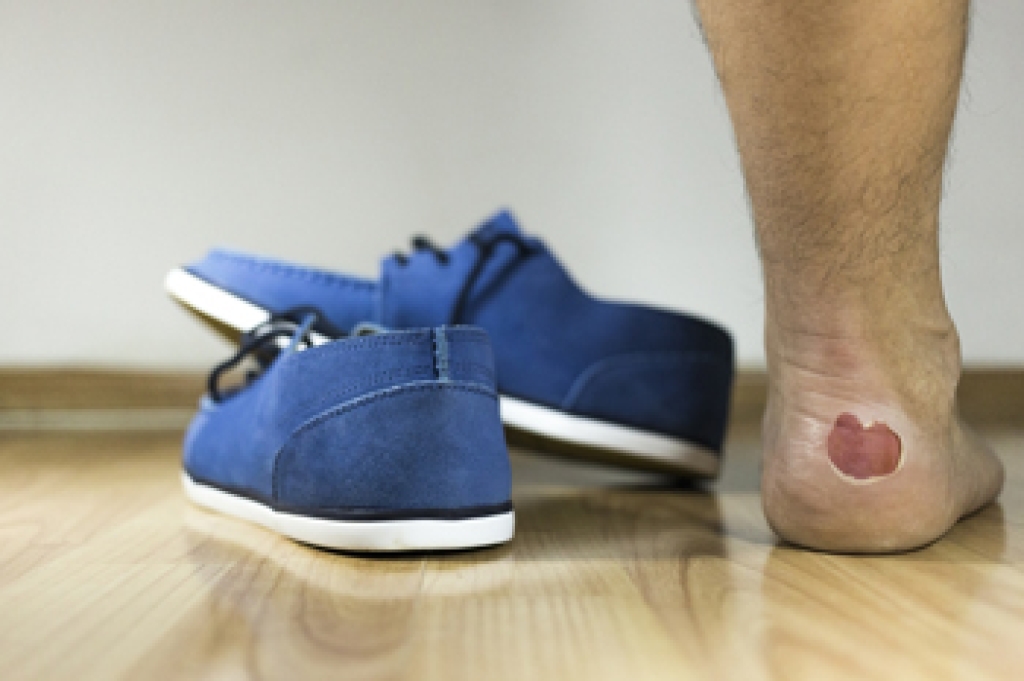
Blisters are fluid-filled sacs usually caused by friction or heat. They are a common complaint of walkers and runners alike and can develop due to poorly fitting shoes, a change in footwear, or an increase in the duration of a workout. Blisters most often occur on the toes, heels, balls of the feet, or soles. Eliminating the source that originally caused the blister may aid in their prevention. The feet should be kept cool and dry, as well as thoroughly examined for spots that rub against socks or shoes. Shoes that are too loose or too tight can pinch and irritate the skin of the feet. It is important to give yourself time to break in a new pair of shoes before wearing them for long periods of time. Wear synthetic socks to prevent moisture build-up and watch for seams in socks that can rub against shoes. If a blister does develop do not pop it and cover it with a bandage. If a blister does not drain on its own or becomes infected, contact a podiatrist for treatment and additional ways to prevent them from recurring.
Blisters are prone to making everyday activities extremely uncomfortable. If your feet are hurting, contact one of our podiatrists of Bergen Foot & Ankle. Our doctors can provide the care you need to keep you pain-free and on your feet.
Foot Blisters
Foot blisters develop as a result of constantly wearing tight or ill-fitting footwear. This happens due to the constant rubbing from the shoe, which can often lead to pain.
What Are Foot Blisters?
A foot blister is a small fluid-filled pocket that forms on the upper-most layer of the skin. Blisters are filled with clear fluid and can lead to blood drainage or pus if the area becomes infected.
How Do Blisters Form?
Blisters on the feet are often the result of constant friction of skin and material, usually by shoe rubbing. Walking in sandals, boots, or shoes that don’t fit properly for long periods of time can result in a blister. Having consistent foot moisture and humidity can easily lead to blister formation.
Prevention & Treatment
It is important to properly care for the affected area in order to prevent infection and ease the pain. Do not lance the blister and use a Band-Aid to provide pain relief. Also, be sure to keep your feet dry and wear proper fitting shoes. If you see blood or pus in a blister, seek assistance from a podiatrist.
If you have any questions, please feel free to contact our offices located in Fort Lee, NJ and Flushing, NY . We offer the newest diagnostic and treatment technologies for all your foot care needs.
